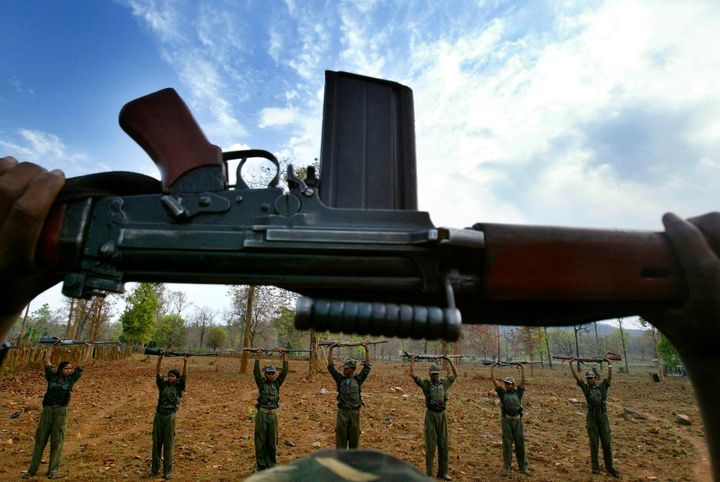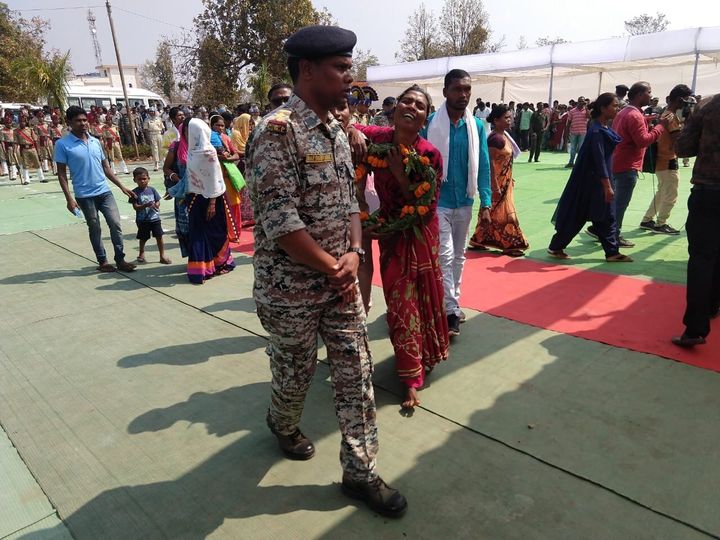
NAGPUR, Maharashtra — The death of 17 policemen in an encounter with the Maoists in Sukma district of south Chhattisgarh on Saturday has put to rest the theories of the end of the Maoist insurgency and reiterated the fact that south Sukma still remains a hotbed of guerilla activity despite the establishment of a large number of police and Central Reserve Police Force camps in this well-known conflict zone.
What really happened?
On Friday March 20, approximately 600 armed troopers of Chhattisgarh police’s District Reserve Guard, Special Task Force and CRPF and the Combat Battalion for Resolute Action (CoBRA) left for an anti-Maoist operation from their camps near the forested villages of Burkapal and Chintagufa in south Chhattisgarh.
“The intelligence input was accurate and the forces had left after ascertaining it,” a senior official involved in anti-Maoist operations in Bastar said. “All of them were being provided with proper support and monitored. There was an intelligence input of the presence of around 250 Maoists in the forest near Elmagonda, Minapa, and Rengapara,”
These 600 security personnel were combing the area after being divided into different teams and some of these teams had up to three skirmishes with the Maoists until the biggest encounter on Saturday afternoon.
The incident took place when these teams were returning back to their base camps on Saturday.
A team of 38 DRG and STF personnel got caught in a “V-shaped” ambush put up by the Maoists near Rengapara village.
“More than five of our colleagues were down in the first fire itself but we retaliated hard. We had almost managed to break the Maoist ambush but unfortunately, we were out of ammunition,” said a trooper who was part of one of the team, adding that one of his fellow troopers — Gandham Ramesh — had fought valiantly. “He was shot when he was changing his fourth magazine. Had we been a few more in number and our ammunition lasted a few more rounds, we would not have suffered so many casualties. At least we would have managed to avoid the ignominy and bring the bodies of our dead colleagues back with us.”
Those, who managed to escape from this ambush, had to throw away their uniforms and weapons as they feared the local militia might attack them on the way.
There was no option. We were out of ammunition and were outnumbered by almost 10 to 1 by the Maoists,” informed another trooper of the District Reserve Guard.
While 15 members of this team returned to their base camp by Saturday evening, followed by some in the night, seventeen were found to be missing, the trooper said.
It was clear by Saturday evening that hardly anyone from these 17 was alive but it appears that Chhattisgarh’s Chief Minister Bhupesh Baghel was not informed when the Director-General of Police D.M Awasthi met him that evening.
The bodies of these 17 policemen were recovered on Sunday by a contingent of over 500 troopers.
“It is a puzzle because the place of incident is hardly 3 to 4 kilometers from Chintagufa CRPF camp. The bodies could have been retrieved by Saturday evening itself,” said the senior official quoted earlier.
What went wrong on the ground?
“The Maoists capitalised on the perception that they are losing ground in this area. There had been no major incident in this patch after the April 2018 incident of Burkapal in which 25 CRPF men were killed,” said a government official who lives in this area. “In the last three months, the Maoists allowed the forces to even pass through their dens unopposed which did bring in some amount of complacency in the forces.”
The Maoists observe the Tactical Counter Offensive Campaign (TCOC) between January to May every year in which they try to execute a major attack on the security forces. The TCOC period went almost silent in 2019.
“There were operations in this area in the last two months but the security teams situated on Dornapal-Jagargunda road would comb the forest and would move towards the Errabore or Konta side which meant they did not have to come back on the same route,” said a local source. “In this operation, these teams ventured in the forest and then they were coming back to their base camp which made it easier for the Maoists to track their movements. There is only one hilly patch in Rengapara which the forces used while going in and coming out.”
Clearly, the Maoists had successfully created a sense of normalcy in the area before executing such massive damage. The routine rotation of commanding officers of the forces posted in the area could also have played a role.
“Some new commanders took over these teams and many of them were not acquainted with the area,” said one official posted in Jagdalpur.

Confusion On Policy Front
Since the Bhupesh Baghel government took over as the chief minister, there has been no clear policy on the government’s position on the Maoist insurgency.
One minister in the Baghel government termed the Sukma encounter a “security lapse”, while Baghel was quick to declare that the anti-Maoist operations would carry on.
If some officials posted in Bastar are to be believed, the coordination between the local and central forces has not been as it was when Bharatiya Janata Party (BJP) was ruling the state and the center. Yet the BJP’s tenure was marked by a sharp escalation of the conflict, heavy civilian casualties and numerous reports of human rights violations — including rape, extrajudicial killings, collective punishment and arson — by security forces.
“Some of the postings in the Chief Minister’s Office gave a sense that this dispensation was not in the mood of the all-out operations against the rebels,” said a police official posted in Jagdalpur. “You need to give a sense of power to the forces, not a sense of confusion,”
The Baghel government could sense the mood amongst the forces and was quick to appoint two IPS officers - Jitendra Shukla and K.L.Dhruv, who had already served in Bastar in their previous posting, back to the region on Monday
Renewed Conflict
This incident is likely to intensify the conflict in Bastar now because after a long time a local force has suffered casualties. The villagers of Rengapara, Minapa, Elmaguda, and Kasalpada could face the security forces’ wrath after this incident as has been witnessed in the past.
“Most of the Maoists in this ambush did not appear to be local. Although they were led by Hidma’s (head of Maoists’ battalion) team, they were talking in various languages like Oria, Telugu, Bengali, and Marathi,” said a DRG constable who hails from and posted in Sukma.
“The weapons also appeared to be more sophisticated than before including the UBGL. The Maoists were running short of ammunition but this incident proves, they have begun to get it now.”